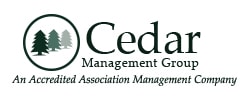Homeowners associations (HOA) have many responsibilities when it comes to protecting the assets of the community. Using the best accounting method for HOAs comes along with that engagement. Before putting any of that into practice, however, you must first understand the three methods of HOA accounting and then learn about the best accounting method for HOAs.
When setting up your HOA accounting standards, you must first decide which accounting basis to use. To put it simply, the basis of accounting is the timing of recording financial transactions, be it revenues or expenses. Let’s take a look at them here.
Exploring the Best Accounting Method for HOAs
 As a board member, you carry the duty of planning the financial course of the organization. In any form of accounting, there is a skill in balancing the budget and ensuring the operating and reserve funds are managed appropriately to keep everyone’s investment protected.
As a board member, you carry the duty of planning the financial course of the organization. In any form of accounting, there is a skill in balancing the budget and ensuring the operating and reserve funds are managed appropriately to keep everyone’s investment protected.
Don’t be the person whose accounting standards are based on cheesy quotes on money like:
“Money doesn’t grow on trees.”
“You have to spend money to make money.”
“The best things in life are free.”
“A penny saved is a penny earned.”
“You can’t take it with you.”
You need a detailed plan for the HOA’s financial future to prevent disaster. Financial obligations can include repairs, maintenance, and bankruptcy. So, which of the HOA accounting methods should you use when preparing your association’s (monthly, quarterly and annual) financial statements?
1. Cash Basis of Accounting
 The first method of accounting is the Cash Basis, which records income and expenses only when actual cash is tendered.
The first method of accounting is the Cash Basis, which records income and expenses only when actual cash is tendered.
This basis of accounting remains a popular choice among homeowners associations across the country. However, you must note that it doesn’t conform with the Generally Accepted Accounting Principles, also known as GAAP.
Using cash basis accounting, the only time you can record or report any revenue is when you receive the money. This means you must refrain from recording it, even though the money has already been earned.
When recording on a Cash Basis, the “Cash” account title increases on the Balance Sheet. Since all transactions are on a cash basis, account titles like “Assessments Receivable” or “Prepaid Assessments” aren’t used.
The same HOA accounting rules apply to recording expenses when using the Cash Basis. You may only record expense accounts when actual money has been paid, regardless of when they were incurred. Similar to revenue recording, only the “Cash” account title is used. Payable accounts, such as “Accounts Payable,” don’t exist on the Balance Sheet.
When the Cash Basis of Accounting is used, there is no way to verify how much you expect to be paid (or to pay) because accounts like “Assessments Receivable,” “Prepaid Assessments,” and “Accounts Payable” aren’t reported on the Balance Sheet.
2. Accrual Basis of Accounting
 In contrast to the Cash Basis, the Accrual Basis records revenues and expenses as they happen, instead of when cash is exchanged.
In contrast to the Cash Basis, the Accrual Basis records revenues and expenses as they happen, instead of when cash is exchanged.
This means all of the association’s financial transactions are reported. Out of the three HOA accounting methods, the Accrual Basis is also the only basis that conforms with GAAP.
Using accrual accounting, you must record revenues when they are earned, regardless of when cash is received. Accounts like “Assessments Receivable” and “Prepaid Assessments” exist on the Balance Sheet.
In fact, they increase when it’s time to charge HOA members. Once you collect payment from members (meaning actual cash is received), the “Cash” balance increases while “Assessments Receivable” decreases.
Expenses are also reported in a similar manner. Once the association incurs the expenses, you must record them on your Balance Sheet. The liability account “Accounts Payable” appears on the Balance Sheet for expenses incurred but not yet paid. Once you pay for these expenses, the “Cash” balance on the asset side and the “Accounts Payable” on the liabilities side decrease. In the end, your Balance Sheet still ends up “balanced.”
With the use of the Accrual Basis, you must prepare an Aged Assessments Receivable Report, a Prepaid Assessments Report, and an Accounts Payable Report. The first report shows you a detailed list of owners who are in debt to the HOA, while the second report gives you a list of owners who have paid their assessments ahead of time. Finally, the last report shows you the association’s unpaid invoices.
3. Modified Accrual Basis of Accounting
Also known as the Modified Cash Basis, this basis of accounting is an amalgamation of the first two HOA accounting standards. This method, like the Cash Basis, doesn’t conform with GAAP.
Unlike the Cash Basis and the Accrual Basis, the Modified Accrual Basis differs in timing when it comes to reporting its revenues and expenses. Using this method, you must record the revenues when they are earned. This means you don’t have to wait until cash is received to report them. The timing for reporting revenues is similar to the Accrual Basis.
On the other hand, when recording expenses, the timing follows the Cash Basis. As such, you must record expenses when they are paid and actual cash is tendered, regardless of when they are incurred.
Using this method, accounts like “Assessments Receivable” and “Prepaid Assessments” will appear on the Balance Sheet. However, liability accounts like “Accounts Payable” will continue to be absent. If you have a separate Accounts Payable Report, you have no way of verifying the amounts against the Balance Sheet.
The Best Accounting Method for HOAs
 The most popular method of the three is the Cash Basis method. However, it does have its faults. Think of the Cash method as a checking account. Money comes in, money goes out, and everything is recorded accordingly.
The most popular method of the three is the Cash Basis method. However, it does have its faults. Think of the Cash method as a checking account. Money comes in, money goes out, and everything is recorded accordingly.
While the Cash Basis is easy to understand and frank, it has blind spots with respect to unpaid bills or dues from HOA members. This creates an unrealistic view of the organization’s finances.
The Modified Accrual Basis method poses comparable issues when it comes to the accuracy of the HOA’s economic future because the combined process involves using cash. With exactness being one of the prominent goals when it comes to association accounting, the Modified method remains unreliable.
Generally, out of the three methods of HOA accounting, the Accrual Basis method is the healthiest and superior accounting standard to use. It’s simply the best accounting method for HOAs. Even though it’s a tad bit confusing at the beginning, it’s the only method in conformity with GAAP and is considered the most reliable when it comes to reporting. This basis offers you a more complete and accurate picture of your association’s financial condition.
While you can use the Cash Basis or the Modified Basis for interim reporting purposes, your HOA must use the Accrual Basis for final financial reports. Regulations vary from state to state, so checking with civil codes is also imperative in the process.
The First Step to Accurate Bookkeeping
Understanding the three methods of accounting is the first step toward accurate financial recording. As a board member, it’s your responsibility to report all financial transactions with care and precision. That means choosing the best accounting method for HOAs for all reporting and sticking to it. While the task may not be easy — and you may make mistakes — it’s certainly a necessary part of the job.
For whatever reason, some HOAs turn to professionals for help with bookkeeping. If you find yourself in a similar situation, we’re just one call away.
RELATED ARTICLES:
- How To Prepare An HOA Budget
- HOA Financial Management: Let Your HOA Management Company Protect Your HOA’s Money
- 8 Must-Have Qualities Of An HOA Treasurer






